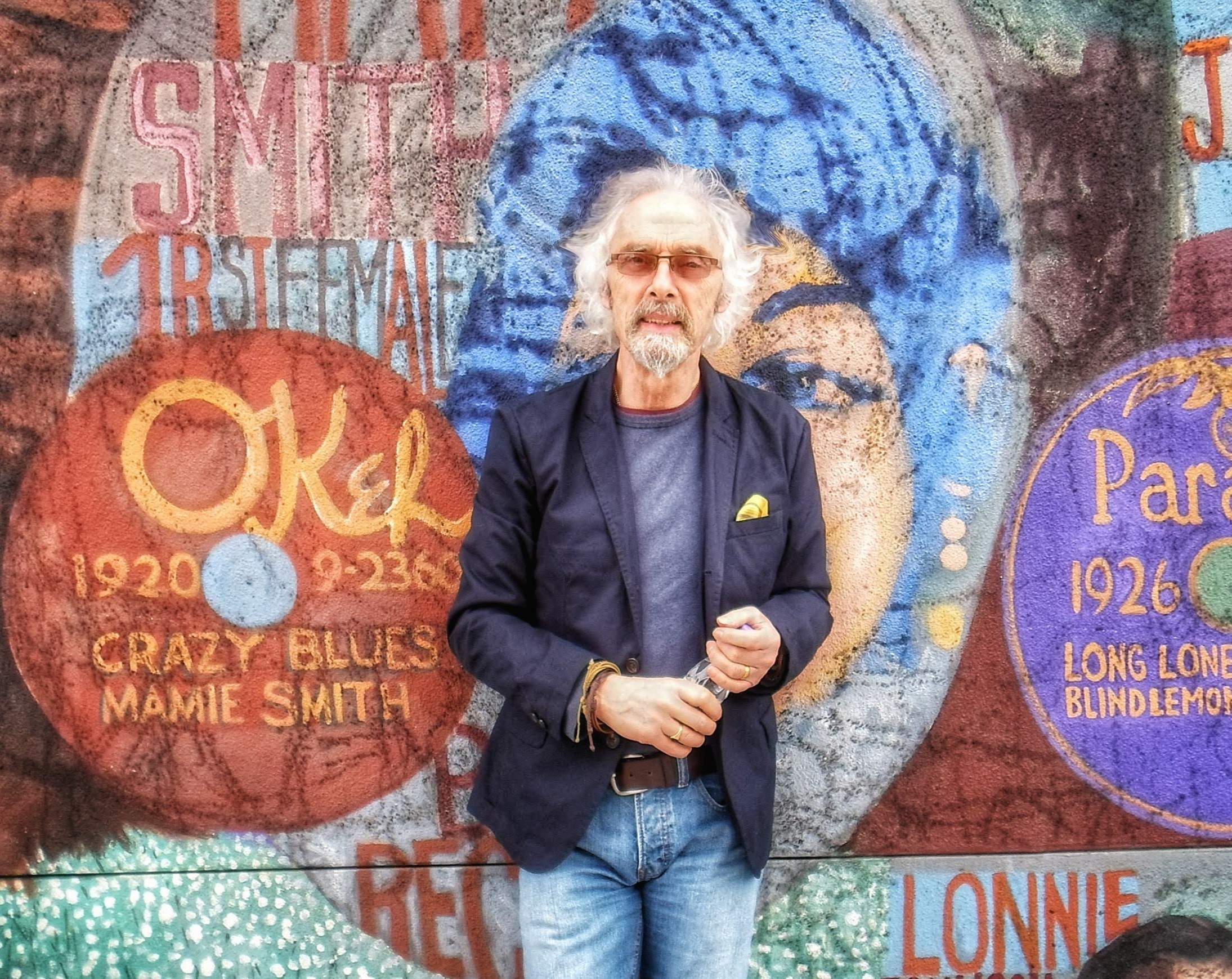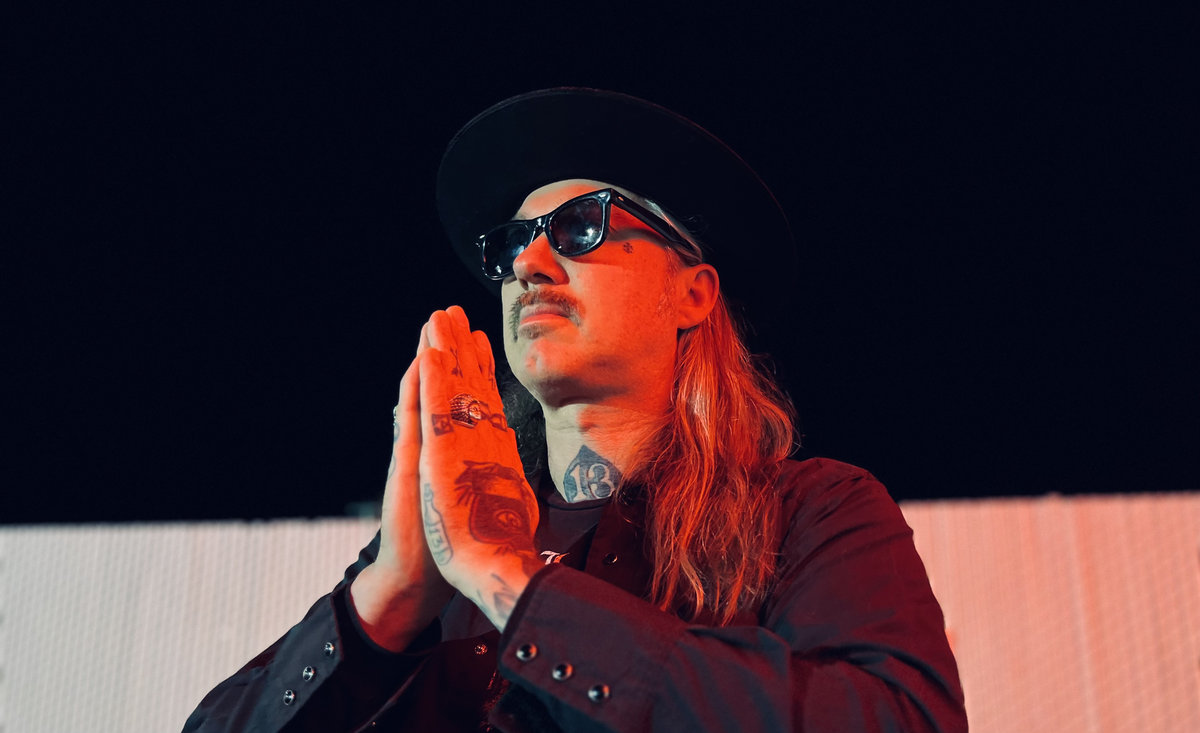Recreating Mental Landscapes: Artist Profile of Jeeyoung Lee
South Korean visual artist Jeeyoung Lee employs a multi-step process in creating her surrealistic works. In her tiny studio, she first constructs elaborate sets that reflect a combination of Korean folk tales and the artist’s own inner states. She then photographs herself inside the sets, and the resulting picture is the final artistic product. Once that’s done, she destroys the installation and films herself doing so. The full process generally takes her two or three months to complete.
“What I make is a recreation of my mental landscape,” the artist explains, when asked about how she came to choose her particular form of creative expression over other artistic avenues she may have taken. “But it is ‘real’ for me because it reflects my experience and emotion. I materialize what is in my head by building an installation and documenting the scene on photograph, a media that is used to record reality. I believe this explains why I choose photography and installation as a medium.
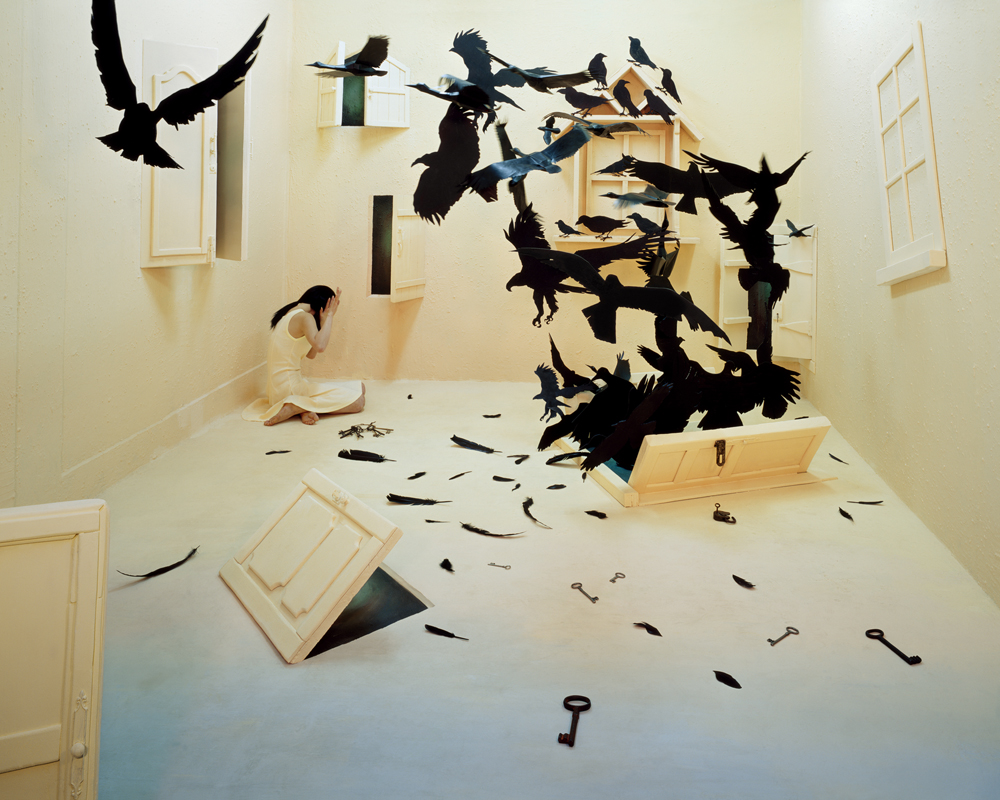
“The final outcome is in the form of photography, but I consider the entire process of building an installation, posing, taking the photograph, and destroying the set an integral part of my artistic creations. Capturing a moment in time, making an installation, and posing behind the camera allows me to take a step back and observe the experience as a third person. In other words, I relive the experience as the protagonist and an observer. My artwork allows me to look back at my experience, but it also helps me get over the emotions involved with that experience. It is all in part of my effort to grow and progress by taking a positive look at myself and my life.”
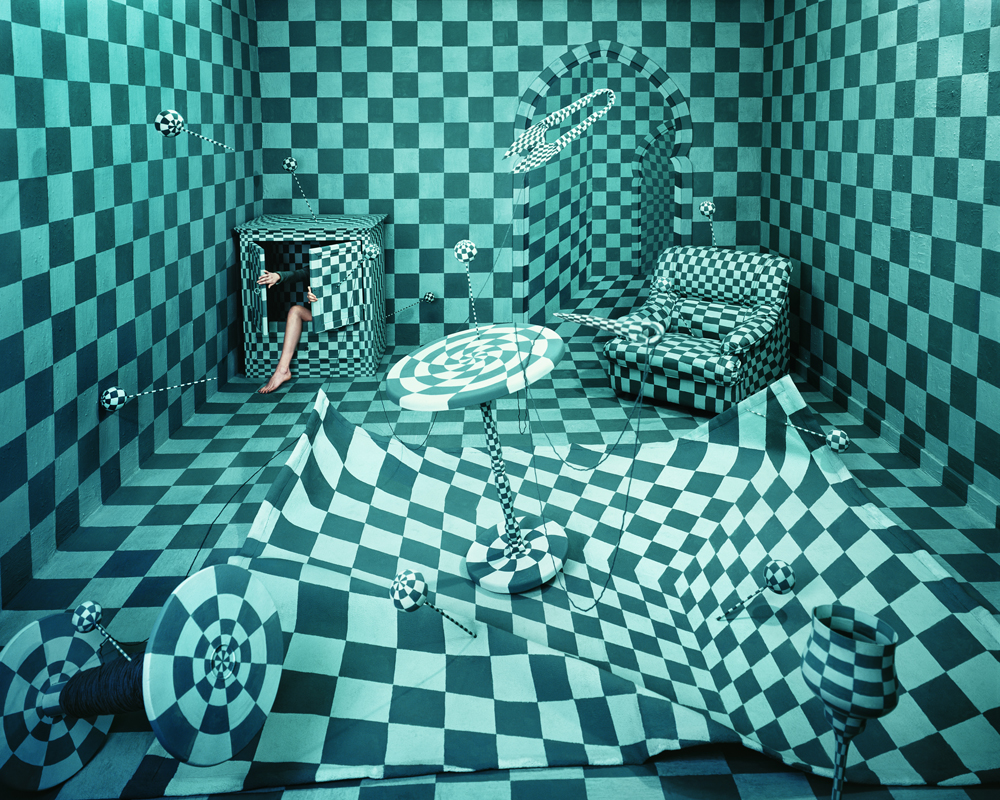
Although Lee incorporates elements of her native country’s history and culture in her works, the viewer’s ultimate takeaway upon seeing her finished photographs is that the pieces seem to be deeply personal expressions. We see Lee situated in sets that appear to depict her dream states. Sometimes she looks traumatized in the photos (which she does not digitally manipulate), like when she’s cowering from menacing birds or being closed in upon by spiky objects coming through the walls; and other times her installations and her image inside them show more serene settings, like when she’s perched atop a lotus flower. Regardless of the particular atmosphere of each individual work, when considering them the viewer is likely to come away feeling as though the artist is sharing with them images that represent her own innermost feelings.
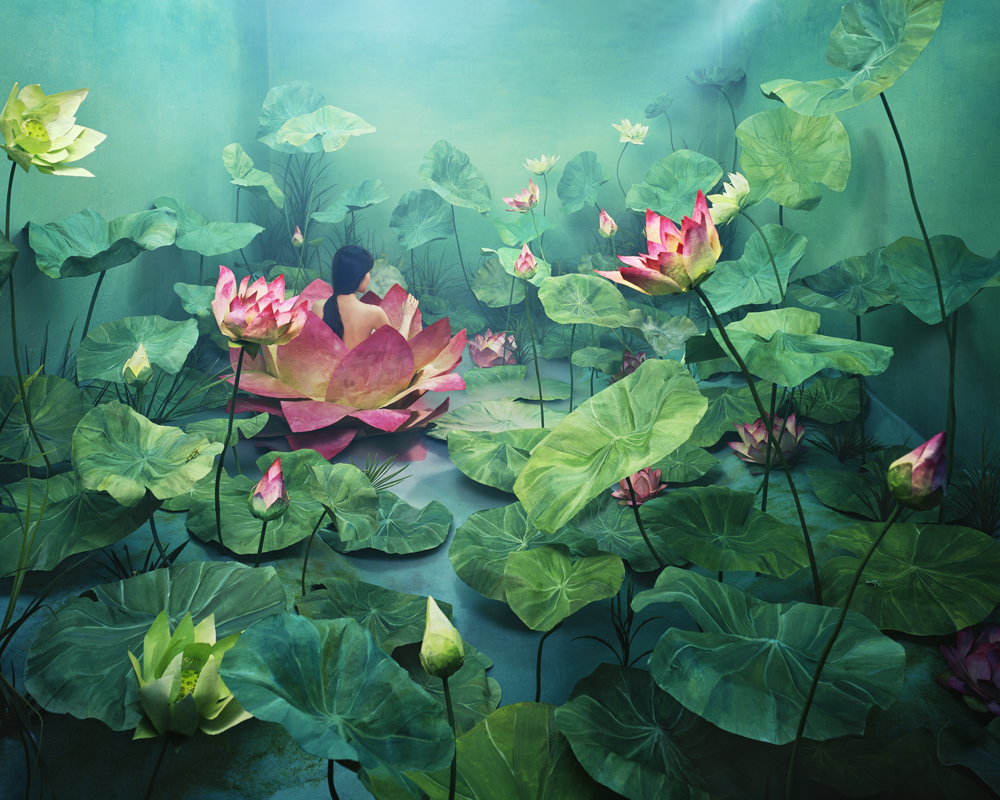
Asked if she feels she’s able to capture universal human experiences in such personal creative expressions, Lee explains, “My work may be inspired by my personal experience and memories and feelings, but it is hard to see exactly what the stories behind the pieces are without my explanation. Metaphoric as they are, I don’t urge my audience to see the pictures the way I see them. I want them to be open to interpretation. I hope the audience will discover a story of their own when they see my work. It’s interesting to hear their own interpretation. I don’t think my personal experiences are very unique and outstanding. I feel they are emotions that everyone goes through at some point in their lives. I capture those emotions, convert them into symbols, and expand upon its horizons. My goal is to transcend cultural limitations and language barriers and reaching out to the peoples’ hearts.”
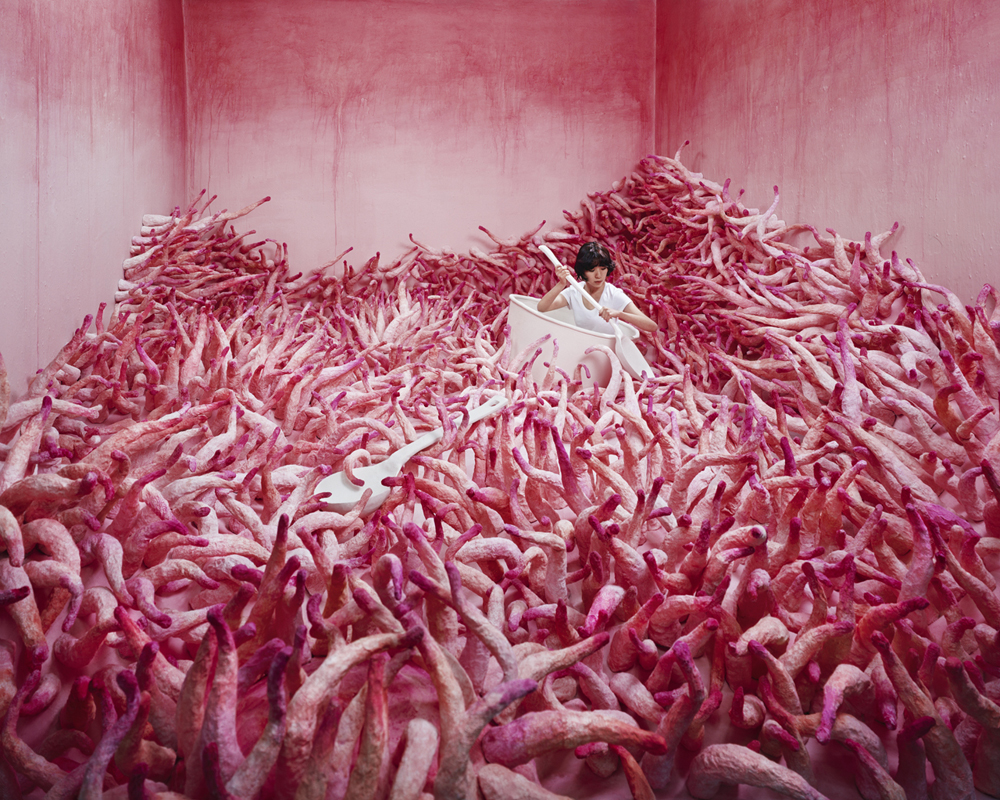
It’s always interesting to understand a visual artist’s process. How do their ideas come to them? When do they know it’s time to get started on a new work, and when do they know it’s done? These matters are especially intriguing with respect to Lee’s creations. She offers some insights:
“My artwork is also kind of my journal. The most mundane item can be a source of inspiration for me. Stories I have heard, childhood memories, past experiences, emotions, dreams, friends, love life, my position and the social pressure I feel as a member of Korea’s society and my life as an artist are all a great source of new ideas. Also, when I need to be inspired, I turn to visual stimulus on media and sometimes literature. I always keep a memo with me so I can write down ideas that pop up in my head. I like to daydream at a quiet cafe, putting together ideas by combining elements and scenes. When I have a subject or an idea that I’d like to expand on, I make a rough sketch. After I have a rough sketch of what I have in my mind, I go out looking for the right materials and do some tests with the materials.
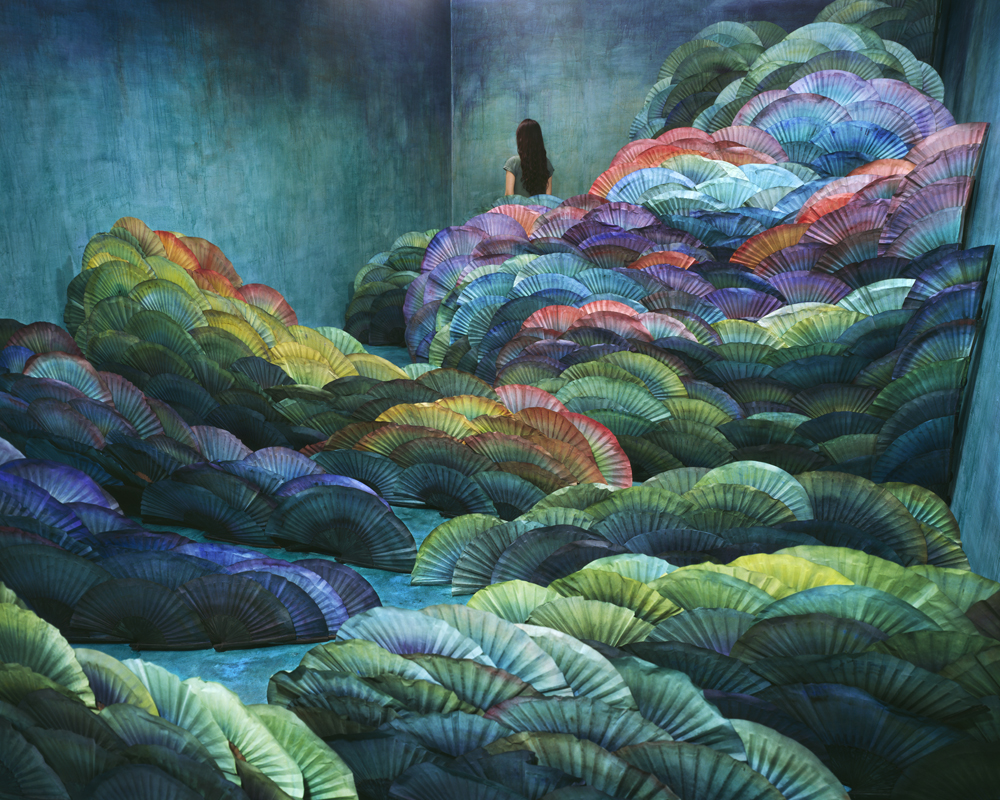
“Completing an image involves a lot of thought. My artwork is a combination of my inner thoughts. I have to figure out which object is best in unraveling my story and what these objects could imply to the viewers. I take my time in researching and understanding colors, what they might imply, and possible combinations. Once it is all done, I know it’s time to start a project physically.”
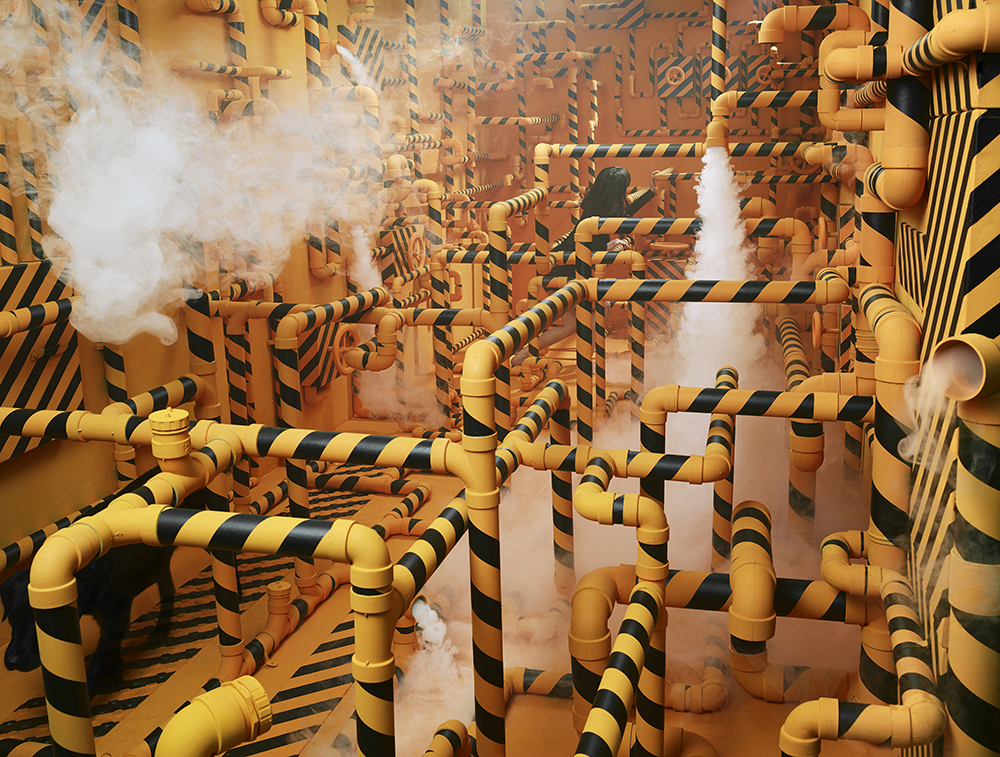
Lee’s work has been widely exhibited around the globe since 2009, in both group and solo shows. Her CV also includes an impressive list of grants and awards. Her works “Panic Room” and “My Chemical Romance” are represented in a solo exhibition she has now in São Paulo (the show was recently forced to temporarily close down due to the pandemic crisis, but will reopen when that becomes possible). Her current efforts include a new project involving her signature, longstanding series “Stage of Mind,” as well as something new for her, which utilizes fog as material. Additionally, she is thinking in terms of future creations that will have an ecological theme:
“I had some time to think about the negative effect that humans have made to mother nature. I’m planning to work on this matter. I will be devoting myself and time to show the mess we have created on the environment through art.”
– Brian Greene
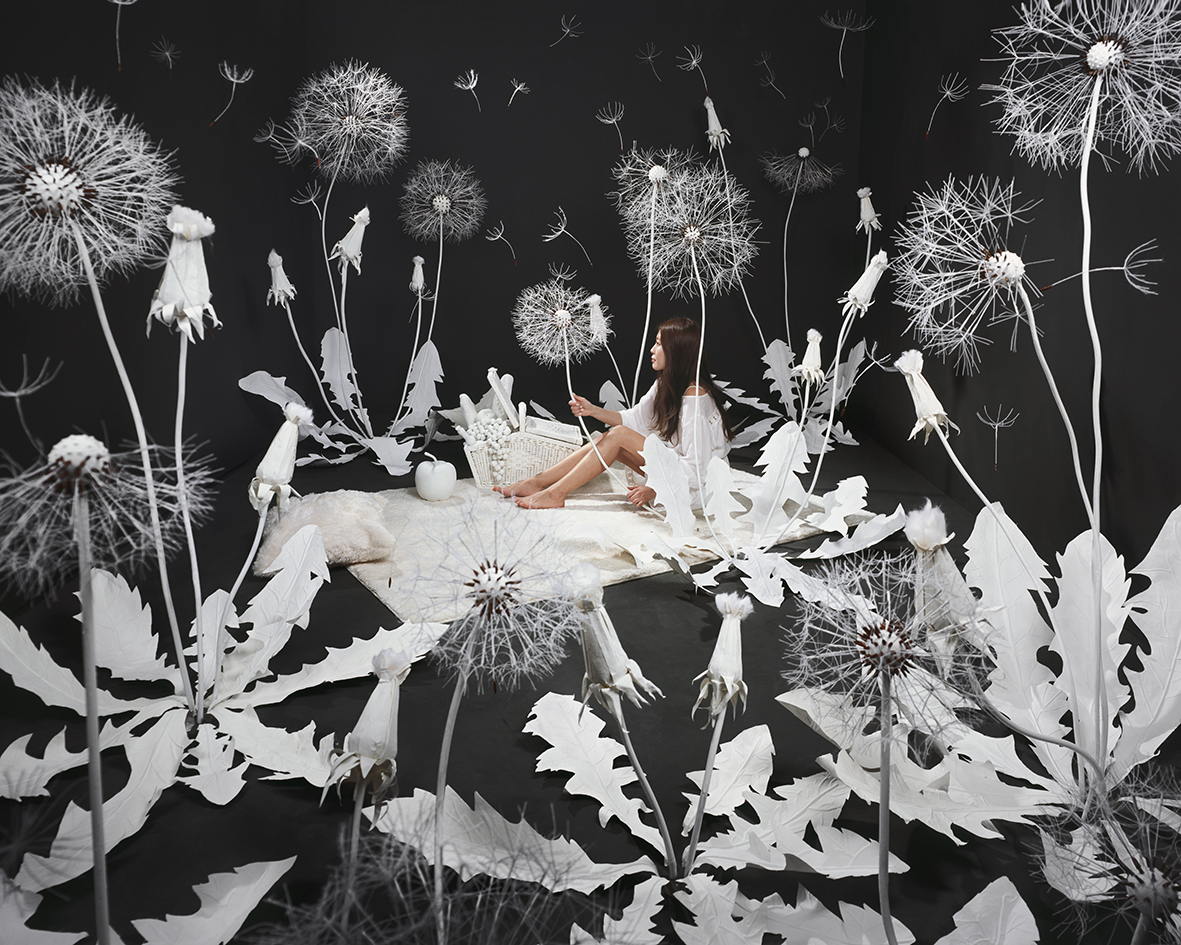
Jeeyoung Lee Cargo Collective
Jeeyoung Lee Instagram

